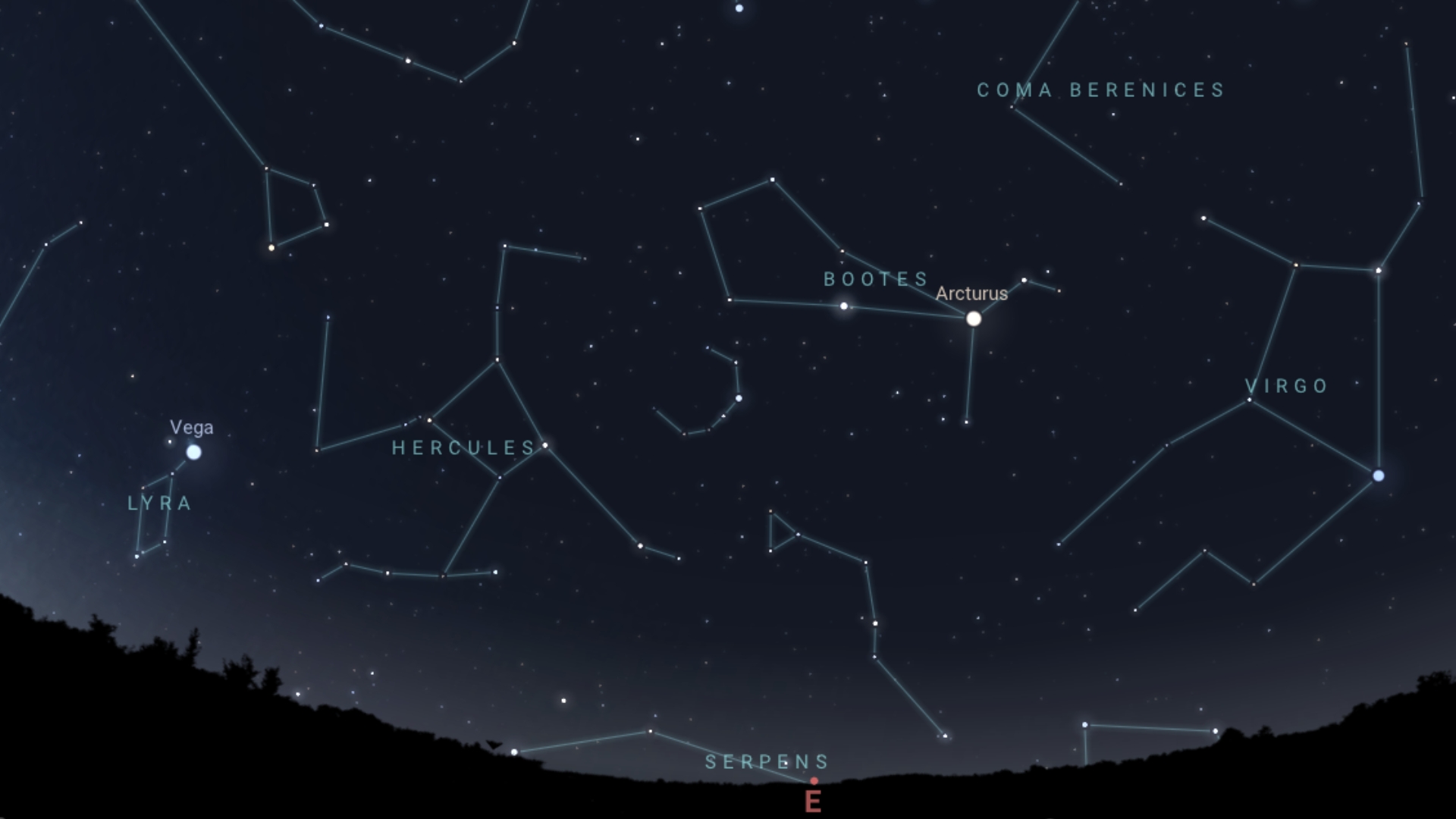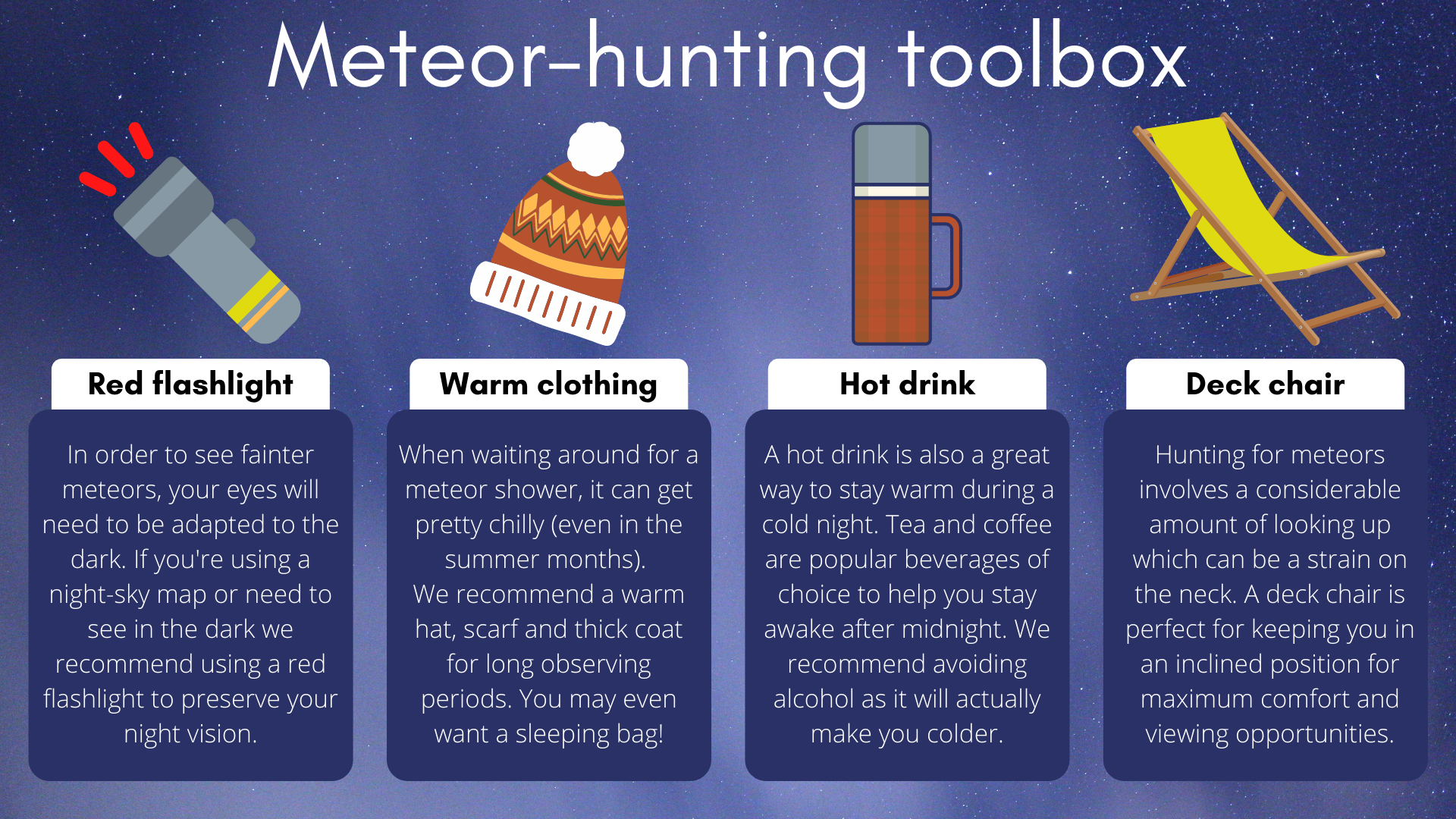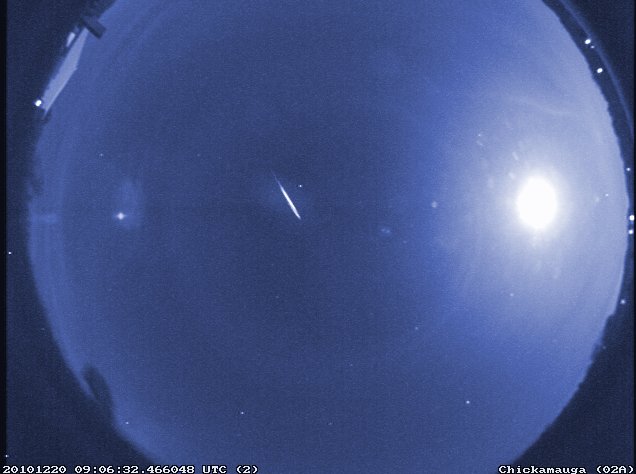
The Quadrantid meteor shower is active (and visible) between Dec. 28 and Jan. 12, and will peak overnight Jan. 3-4.
Viewing conditions for the Quadrantids are bad for 2026 as there will be a 100% illuminated full moon during the peak.
Related: Annual meteor shower viewing guide
The Quadrantid meteor shower is produced when Earth passes through the debris or ice and dust left behind by asteroid 2003 EH1, which is likely an extinct comet, NASA meteor expert Bill Cooke told Space.com. "It was either a piece of a comet or a comet itself, and then it became extinct," which means that all the ice and other volatiles on the comet have evaporated, Cooke said.
"A lot of meteor showers last days — the Quadrantids last a few hours," Cooke said. As many as 100 Quadrantid meteors can be seen some years during the peak when Earth plows through the thickest part of the debris stream, Cooke continued, but only if skies are dark enough. Because they're faint, it's easy to miss many of the Quadrantids streaking across the sky.
Where can you see the Quadrantid meteor shower?

The Quadrantids are best seen by skywatchers in the Northern Hemisphere (weather permitting of course).
Meteor showers are named after the constellations from which the meteors appear to emanate, known as the radiant. Unlike other meteor showers, the constellation from which the Quadrantids get their name — the Quadrans Muralis — no longer exists as it is now considered part of the constellation Bootes.
The easiest way to find it is to look north for the Big Dipper. Then, follow the "arc" of the Big Dipper's handle across the sky to the red giant star Arcturus, which anchors the bottom of Bootes.
Don't look directly at Bootes to find meteors, as the shooting stars will be visible throughout the sky. Make sure to move your gaze around the nearby constellations as meteors closer to the radiant have shorter trains (glowing trails of debris) and are more difficult to spot. If you only look at Bootes you might miss the more spectacular Quadrantids.

How to see the Quadrantids
To best see the Quadrantid meteor shower, go to the darkest possible location, lean back and relax. You don't need equipment like telescopes or binoculars as the secret is to take in as much sky as possible and allow about 30 minutes for your eyes to adjust to the dark.
If you want more advice on photographing the Quadrantids, check out our how-to photograph meteors and meteor showers guide. If you need imaging gear, consider our best cameras for astrophotography and the best lenses for astrophotography.

When is the best time to view the Quadrantid meteor shower?
The best time to view the Quadrantids is between the late hours on Jan. 3 to just before the break of dawn on Jan. 4. — when the radiant of the shower is ascending the northeastern sky.
This year, the moon will be 100% illuminated at the time of the shower's peak. To calculate sunrise and moonrise times in your location, check out this custom sunrise-sunset calculator. Time and Date also has a number of useful resources, including a "what time does the meteor shower peak" table to show you the position of the Quadrantids radiant in the sky for your location.
What causes the Quadrantid meteor shower?

The Quadrantids have a somewhat peculiar origin. While most meteor showers come to be from comet fragments, the body responsible for producing the Quadrantids is asteroid 2003 EH1, which astronomers sometimes call a "rock comet."
As the name of the asteroid implies, it was found very recently — in 2003 — by astronomer Peter Jenniskens, a meteor expert with the SETI Institute in California who concluded that 2003 EH1 was the parent body of the Quadrantids/
Adding another layer of intrigue, some astronomers believe 2003 EH1 is the remainder of comet C/1490 Y1, which was lost to history after a prominent meteor shower was mentioned in Chinese records in 1490. It is possible the sky display came from a breakup of part of the comet.
Additional information
Have you seen a fireball recently? Report the sighting to the American Meteor Society to help contribute to fireball research. Take a tour of meteors and meteorites through history on this Google Arts & Culture feature courtesy of Adler Planetarium.
Editor's note: If you captured an amazing photo of video of the Quadrantid meteor shower and would like to share it with Space.com for a story or gallery, send images and comments to: spacephotos@space.com.







